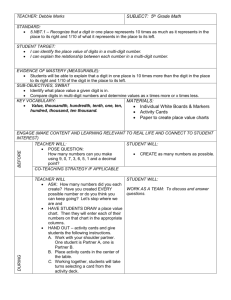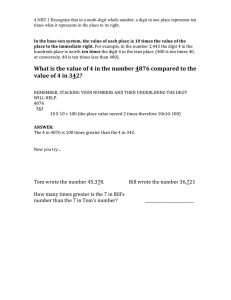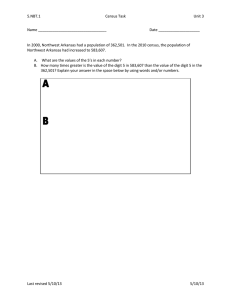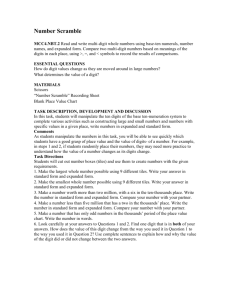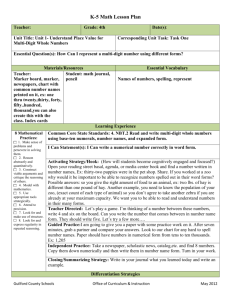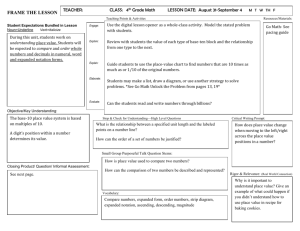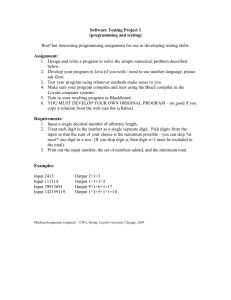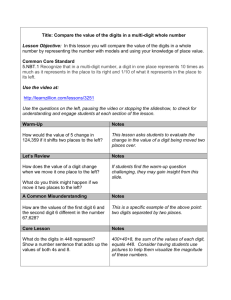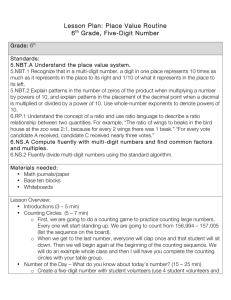Fourth Grade Place Value
advertisement
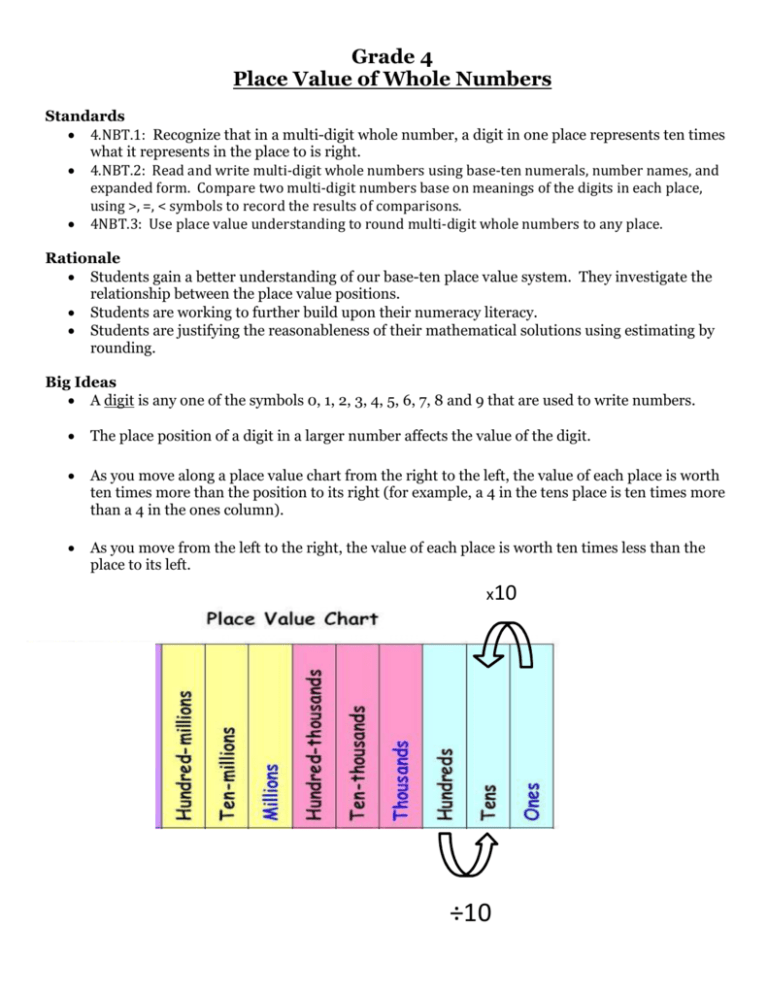
Grade 4 Place Value of Whole Numbers Standards • 4.NBT.1: Recognize that in a multi-digit whole number, a digit in one place represents ten times what it represents in the place to is right. • 4.NBT.2: Read and write multi-digit whole numbers using base-ten numerals, number names, and expanded form. Compare two multi-digit numbers base on meanings of the digits in each place, using >, =, < symbols to record the results of comparisons. • 4NBT.3: Use place value understanding to round multi-digit whole numbers to any place. Rationale • Students gain a better understanding of our base-ten place value system. They investigate the relationship between the place value positions. • Students are working to further build upon their numeracy literacy. • Students are justifying the reasonableness of their mathematical solutions using estimating by rounding. Big Ideas • A digit is any one of the symbols 0, 1, 2, 3, 4, 5, 6, 7, 8 and 9 that are used to write numbers. • The place position of a digit in a larger number affects the value of the digit. • As you move along a place value chart from the right to the left, the value of each place is worth ten times more than the position to its right (for example, a 4 in the tens place is ten times more than a 4 in the ones column). • As you move from the left to the right, the value of each place is worth ten times less than the place to its left. x10 ÷10 Three Forms of Numbers • • • Word Form: a number written using words Standard Form: a number written using digits Expanded Form: a number written, which shows the value of each individual digit (beginning with the largest place) Example: o Standard Form: 4, 329, 857 o Word Form: four million, three hundred twenty-nine thousand, eight hundred fifty-seven. o Expanded Form: 4,000,000 + 300,000 + 20,000 + 9,000 + 800 + 50 + 7 Comparing and Rounding Comparing: • Start at the largest place and move to the right, comparing each digit, one at a time. • Use <, >, or = to compare numbers (example: 3,498,109 < 4,582,302)
